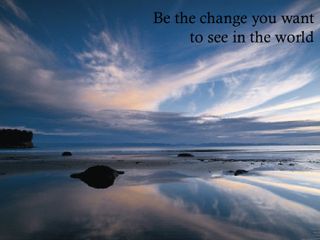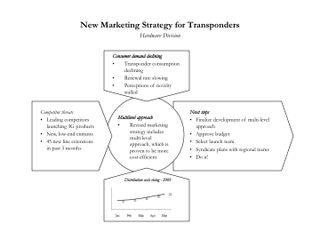Thanks again to Olivia Mitchell for organizing the "PowerPoint Design in 2009" event, which has sparked so much great discussion online. My favorite quote from the project so far is from Nancy Duarte:
Large photos and sparse text are quickly being adopted,
which is great. But they only work for keynotes and marketing. So what about
the physicians, scientists, and engineers?
Karen Bennett, in a comment on Nancy's post, noted correctly that my blog and book (and my life's work!) are focused on responding to Nancy's question.
Hence my wish for 2009: that presenters would recognize the difference between Ballroom and Conference room style presentations, and design their presentation accordingly.
Ballroom style presentations, Presentation Zen-type slides with "large photos and sparse text," are great for informing and entertaining large audiences. Use these at conventions and large sales meetings.
But if you want to persuade, sell to, or change behavior of a smaller group, then what you need is a Conference room style presentation: printed slides with lots of detail that pass the squint test (i.e. that have a graphical layout that instantly communicates what the slide is about–and therefore are MOST EMPHATICALLY NOT slideumentation.)
Why should you use Conference room style slides if you want to persuade a small group to act? Because getting people to take a specific action (e.g. approve your project; buy your product or service; fund your company) is very difficult. Behavior change is hard–especially when the behavior you are trying to drive involves your audience spending money. If you want people to change behavior, your presentation should be: interactive; full of the relevant details; and free of any distractions. (For the research behind this claim, see my Change This manifesto "Presenting to Small Audiences" and of course also my book).
Conference room style slides are interactive (it's much easier to interact around handouts than around projected slides; once the projector goes on the presentation almost invariably becomes a lecture); they provide details; and they are free of distractions. Ballroom style slides, by comparison, typically fail on all three counts.
It's as simple as that.
Conference room style slides are not necessary "pretty," but they work. They get people to act on your ideas, and that's the main point here, isn't it? For more information on designing Conference room style slides, see my post here–and then follow the ten steps for designing a presentation using the Extreme Presentation method. You can also get hold of a copy of my book if you need to go into more depth.
Just to be absolutely clear: I'm not saying that one style is better than the other, I'm just saying that you should pick the appropriate style depending upon your presentation situation.
***
Physicians, scientists, and engineers will most of the time benefit from Conference room style presentations. In fact a significant proportion of the audience in the presentation design classes I teach at Microsoft are now engineers. But don't dismiss the marketers. In fact the majority of people who are currently using Conference Room style presentations at companies where I teach presentation design, (including Microsoft, eBay, Motorola, HJ Heinz, Kimberly Clark, WW Grainger, and Infinitive) are marketers and market researchers: because they too have to get their audiences to take specific actions if they want to achieve their goals.
Since I began with a quote from Nancy, I want to end by saying that the ideas in Slide:ology are applicable to both Ballroom and Conference room style slides, because the book is about great design, and great design is always necessary, regardless of presentation style.

